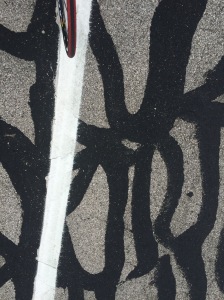On Saturday at noon I needed to run. This was the product of trying to figure out a lot of things in life. Not just the present, but the future.
So I tossed on my favorite running gear and took off north toward St. Charles. I knew it was 10 miles or so up and back.
The run was also an experiment of sorts. I’ve been considering the Naperville Half Marathon in November. It would be a good thing to do a longer run before that, and find out what’s actually in the tank in terms of sustainable running.
What I learned is that I’m aerobically very fit. The total run only averaged 8:47 per mile, which is not that fast even for me these days. Yet I ran a 52:00 10K in there somewhere during the first six miles.
Tarsnakes
But what held me back in the last four miles was a feeling of being beat up in the legs and hips. My companion suggested this might be the result of not doing that many long runs in the weeks leading up to Saturday. And yet, last week I ran a 10K on the trail in just over 45:00. Even during that run my hips and legs got tight and tired.
The only antidote that I’ve seen to this problem is not more running. It’s weight work. Lots of weight work. One of the tarsnakes of running is that it is sometimes the preparation you do off the road that makes you good on it.
Our bodies depend on strength to sustain pounding. You can run all you want to accomplish this, and get some nominal effects out of the effort. But you won’t necessarily strengthen your hips and legs that way. In fact what running does sometimes is accentuate your weaknesses and inflexibilities.
As a result, we pick up injuries to the IT band, the knee of the hip. Often there is hamstring tightness involved in all of this. You simply cannot run healthily if your hamstrings are either tight or weak, or both. You will have problems.
Planning ahead
I had already envisioned doing lots of strength work this winter in preparation for better cycling next year. One of the challenges in aging is the fact that muscle mass reduces the more you add years. In order to combat this trend, an athlete must do strength work on a regular basis and go beyond what they have traditionally done as well.
Otherwise, your baseline continues to erode. It gets tougher to run on the roads especially, because all that pounding resonates up the body, causing even further tightness and soreness. If you’re unlucky, you’ll develop a pulled tendon or stress fracture.
Biomechanics
 This is especially true if you have biomechanical issues. Most runners do. Some try to combat them with strength training alone, and I get that. One of my doctor friends refuses to get orthotics, but he’s been hurt for a full year and it may be time for him to come to Jesus, so to speak. He’s got the means, and if orthotics bolster his stability and fix his gait, he’s got everything to gain.
This is especially true if you have biomechanical issues. Most runners do. Some try to combat them with strength training alone, and I get that. One of my doctor friends refuses to get orthotics, but he’s been hurt for a full year and it may be time for him to come to Jesus, so to speak. He’s got the means, and if orthotics bolster his stability and fix his gait, he’s got everything to gain.
However my orthotics give me fits after six miles because my feet get numb. This is a problem because you can’t really run effectively if your feet hurt. So I need to go discuss this with the pedorthist to find a cure.
Wear patterns
I’ve also noticed the left heel of my running shoe is wearing out quicker than my right. That’s been the case all my life, but it does not need to be that way.
What I learned from my ten-mile experiment is simple. I’m not ready to run a half marathon because there are too many weaknesses in my foundation and training to justify a run of that length. If my pace fell off from the low 8:00s I was running early in the 10-miler it was not because I was winded, but because I was struggling with a numbness and shakey feeling down below the hip line.
Perhaps by next spring with a winter of strength work under my belt (literally) I’ll be more confident of running that far. My longest run this year has been 12 miles, and actually that went much better than the 10-mile experiment this past weekend. So there’s a chance that it all might go better, and that it might have been overall stress holding me back this weekend. A couple hours after my 10-mile experiment came the call that my father passed away.
Processing
So it was an interesting mental journey as well during those 10 miles. It helped me process all that had been going on, and that’s far more important than whether I choose to race 13.1 miles in a couple weeks or not.
We’re going to race the Sycamore Pumpkinfest 10K next weekend. I may even loosen up and fashion a costume for the occasion. I know my fitness state pretty well from the 10K trial run I did last week around 45:00. Running much faster than that would depend on the winds and weather anyway, this time of year.
Truly I’m happy to be moving and running relatively injury free. The sport still feels good. That’s what the 10-mile experiment actually told me. To keep moving.
